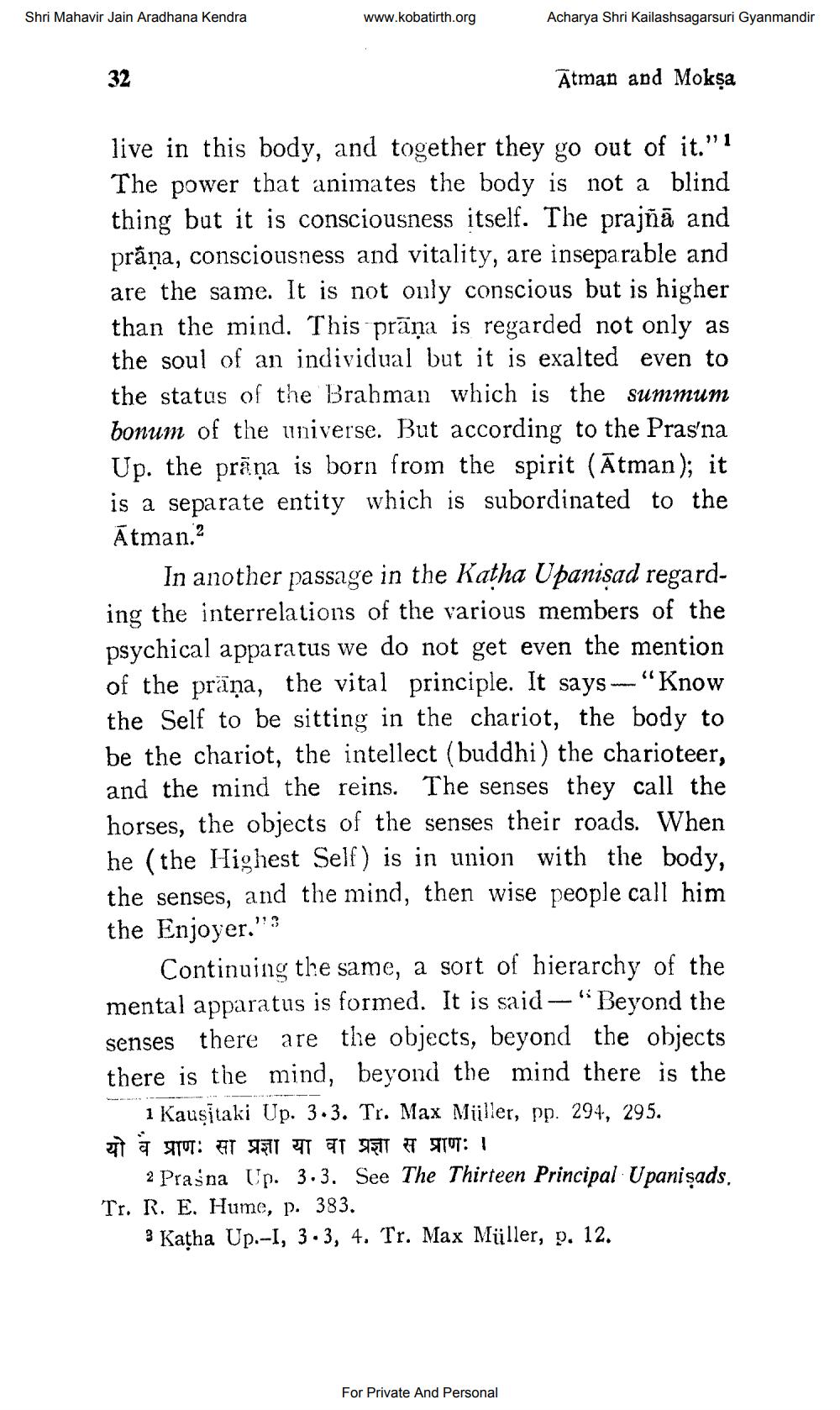________________
Shri Mahavir Jain Aradhana Kendra
www.kobatirth.org
Acharya Shri Kailashsagarsuri Gyanmandir
Atman and Mokỹa
live in this body, and together they go out of it."1 The power that animates the body is not a blind thing but it is consciousness itself. The prajñā and prāņa, consciousness and vitality, are inseparable and are the same. It is not only conscious but is higher than the mind. This prāņa is regarded not only as the soul of an individual but it is exalted even to the status of the Brahman which is the summum bonum of the universe. But according to the Pras'na Up. the prāņa is born from the spirit (Ātman); it is a separate entity which is subordinated to the Atman.”
In another passage in the Katha Upanişad regarding the interrelations of the various members of the psychical apparatus we do not get even the mention of the präņa, the vital principle. It says-“Know the Self to be sitting in the chariot, the body to be the chariot, the intellect (buddhi) the charioteer, and the mind the reins. The senses they call the horses, the objects of the senses their roads. When he (the Highest Self) is in union with the body, the senses, and the mind, then wise people call him the Enjoyer.":
Continuing the same, a sort of hierarchy of the mental apparatus is formed. It is said "Beyond the senses there are the objects, beyond the objects there is the mind, beyond the mind there is the
1 Kausitaki Up. 3.3. Tr. Max Müller, pp. 294, 295. यो व प्राणः सा प्रज्ञा या वा प्रज्ञा स प्राणः ।
2 Prašna Up. 3.3. See The Thirteen Principal Upanişads, Tr. R. E. Hume, p. 383.
3 Katha Up.-I, 3.3, 4. Tr. Max Müller, p. 12.
For Private And Personal




